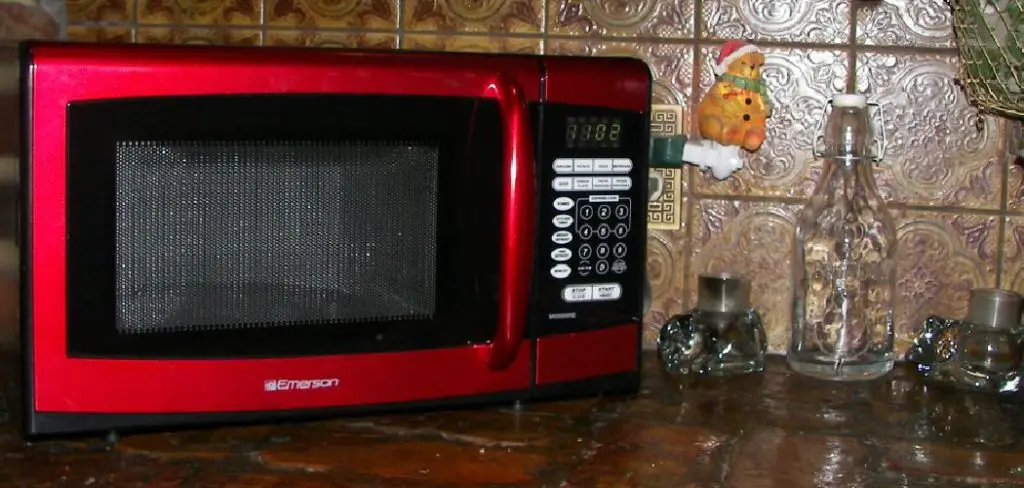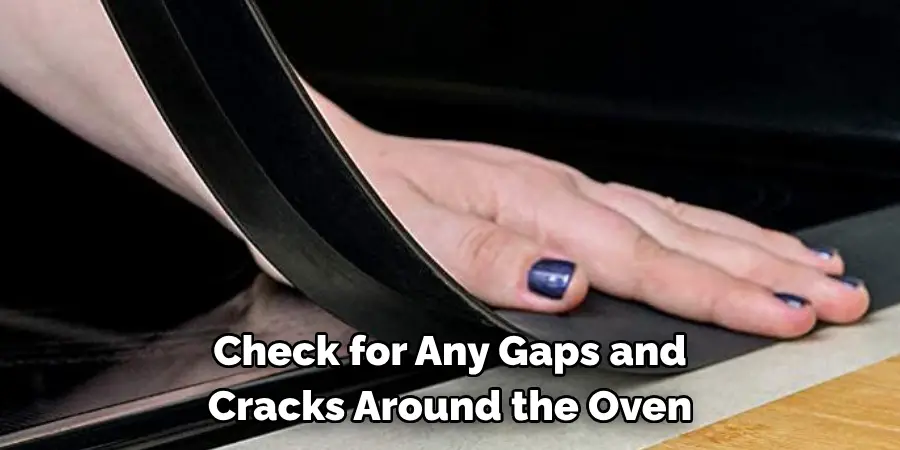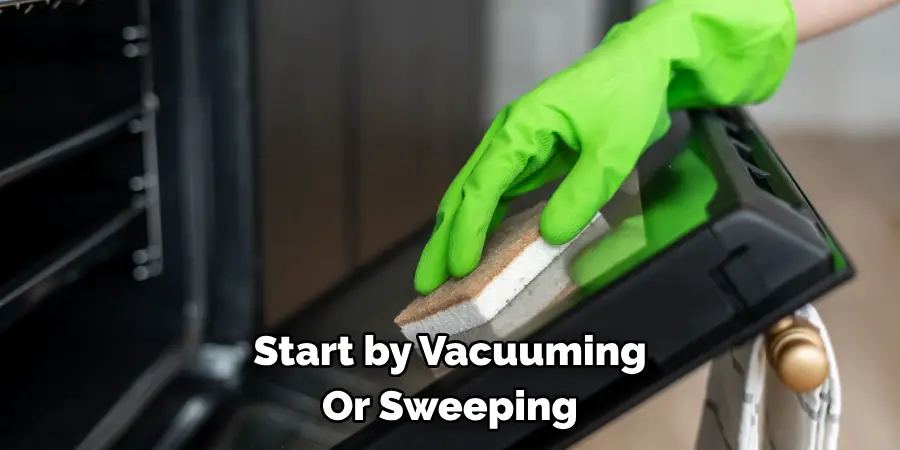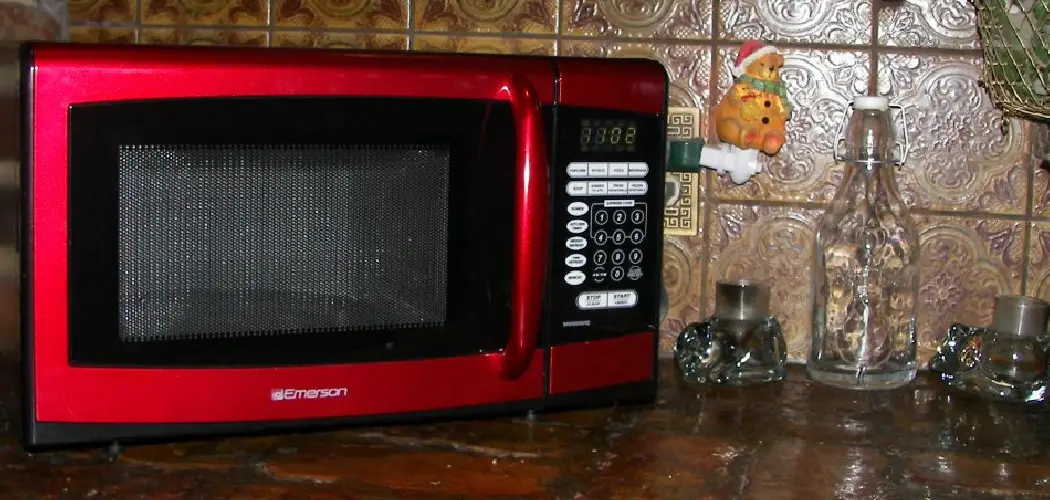Mice can be a major nuisance in any kitchen, but they can also cause serious damage to ovens and other appliances if left uncontrolled. Not only can their droppings spread disease, but they may also chew through electrical wiring or build nests that could start fires. So it’s important to take steps to get rid of mice in the oven as soon as possible.
Getting rid of mice in ovens has several advantages. First, it can help keep your kitchen safe and clean by preventing potential health hazards caused by their droppings or nests. In addition, it can also reduce the risk of electrical fires due to mouse damage to wiring. Finally, getting rid of mice in ovens can help preserve the life of your appliance and save you money on costly repairs. In this blog post, You will learn in detail how to get rid of mice in oven.

Recognizing the Problem
Recognizing the presence of mice in your oven is the first step toward eliminating the issue. These pests are usually silent invaders; hence, it can be difficult to realize their existence until the problem escalates. However, there are signs you can watch for to identify a mouse infestation early.
Signs of Mice in the Oven
Mice leave behind several telltale signs of their presence. These include droppings, which are usually small, dark, and pellet-shaped. Additionally, you might notice gnaw marks on wires or other oven parts that can indicate a mouse problem. Another sign is unusual noises, particularly when mice are most active at night. You may hear scurrying sounds, squeaks, or rustling noises from the oven. Lastly, a strong, musty odor can alert you to a potential infestation.
Differentiating between mice and other critters, such as insects or squirrels, is essential. Mice droppings are typically smaller than those of squirrels and larger than those of insects. Their gnaw marks are also distinct, often leaving tiny, jagged edges on chewed materials.
Assessing the extent of the infestation is also crucial. You might want to determine the severity of the problem on a scale from minor (few signs, little damage) to severe (numerous signs, significant damage). Check potential nesting areas like the oven’s insulation or control panel, and monitor the frequency of signs to estimate the size of the infestation.
Initial Safety Measures
Turn off the Power
Before attempting to remove mice from your oven, ensure that you disconnect it by turning off the power. This step is crucial as it eliminates potential electrocution hazards.
Wear Protective Gear
When cleaning up after a mice infestation, wear protective gear such as gloves and a breathing mask. While gloves will protect you from contact with droppings or contaminated surfaces, a breathing mask will prevent you from inhaling harmful dust particles.
Ventilate the Area
Open windows and doors to ventilate the area. This reduces the chances of inhaling any airborne contaminants present during cleaning.
Step-By-Step Processes for How to Get Rid of Mice in Oven
Step 1: Inspect the Oven
Before attempting any methods to get rid of mice in the oven, it is important to inspect it first. Look for signs of mouse activity, such as droppings and chew marks on wires or insulation and nests.
Step 2: Wear Protective Gear
Make sure to wear protective clothing such as gloves, long sleeves, pants, and a face mask while getting rid of the mice. Mice are attracted to food sources in the oven. Clear out any debris or crumbs that may be present in the oven. Make sure not to leave behind any pieces of food that can attract them back.
Step 3: Seal Off Potential Entrances
Check for any gaps and cracks around the oven. Make sure to seal off any potential entrances to prevent the mice from coming back in. Setting traps and baits can be an effective way of getting rid of the mice in the oven. Be sure to place them away from areas where children and pets may reach them.

Step 4: Try a Natural Repellent
There are many natural repellents available on the market that can help keep mice away from the oven. Some of these include peppermint oil, cayenne pepper, and garlic. If all else fails, using poison bait is an effective way to get rid of the mice in your oven. Make sure to use it in a way that won’t harm children or pets.
Step 5: Clean the Oven
Once the mice have been removed from the oven, make sure to clean it thoroughly. Use a cleaning solution to wipe away any droppings and residue left behind by the mice. Make sure to store all food items properly in sealed containers. This will help prevent any mice from getting into the oven in search of food.
Even after following all of the steps, it is essential to keep an eye out for any signs of mouse activity in your oven. Check around regularly to make sure there are no new entrances or nests being made. If any are found, take action immediately to get rid of the mice.
Deep Cleaning and Sanitation
Post removal of the mice, a deep cleaning and sanitation process is essential to ensure that your oven is safe for use.
Disassembling Removable Oven Parts
For an in-depth clean, start by disassembling removable parts such as trays, grates, and racks. Wash these items separately using warm water and mild dish soap. Scrub to remove any baked-on food debris or droppings. Inspect each part thoroughly for any signs of damage or leftover droppings.
Cleaning the Oven Interior
Next, focus on cleaning the interior of the oven. You can make a safe and effective cleaning solution by mixing equal parts of water and vinegar. Apply the solution to the interior surfaces and scrub with a non-abrasive sponge. For stubborn spots, baking soda can be used as a mild abrasive.
For those who prefer a more hands-off approach, steam cleaning is another excellent option. Many modern ovens have a steam cleaning function that loosens grime and food particles, making them easier to wipe away.
Regardless of the method used, pay extra attention to potential nesting areas like corners and crevices. Mice might have left behind droppings or nesting materials in these hard-to-reach areas.
Eliminating Odors
Lastly, tackle any lingering odors. Natural odor neutralizers like baking soda, vinegar, or activated charcoal can be used for this purpose. Sprinkle a generous amount of baking soda inside the oven and leave it overnight. The next day, remove the baking soda and wipe down the oven with a damp cloth.
For stronger odors, create a mixture of equal parts water and white vinegar, and spray it inside the oven. Close the door and heat the oven to a low temperature, then turn it off and let it cool. Wipe down the interior with a damp cloth.
Activated charcoal also works well to absorb odors over time. Place an open container of activated charcoal in the oven and leave it there for a few days.
Remember, deep cleaning and sanitation aren’t just about aesthetic appeal; they’re also crucial for maintaining a safe and healthy cooking environment.
Long-Term Monitoring and Prevention
To prevent future infestations, it is crucial to implement long-term monitoring and preventive measures. Regularly inspect your oven and the surrounding areas for signs of mouse activity, including droppings, gnaw marks, or nesting materials.
Keep The Area Clean
Maintaining cleanliness around the oven is a proven way to deter mice. Regularly remove food debris and clean the oven to eliminate any potential food sources. This includes the areas around the oven, where crumbs or spills may accumulate.
Regular Inspections
Inspect your oven and the surrounding area regularly for any signs of mice. This includes looking for droppings, chew marks on wires or signs of nests. Prompt identification of any mouse activity will allow you to take immediate action to prevent a full-blown infestation.
Seal Off Entry Points
Regularly check for any potential entry points that mice could use to get into your oven or kitchen. This includes gaps around the oven, holes in the walls, or cracks in the floor. Seal off any potential entrances with a suitable material like caulk or steel wool.
Use Traps and Repellents
Continue using traps and natural repellents as preventive measures. This not only helps to catch any mice that do manage to get inside but also deters others from entering. Remember, it’s always easier to prevent an infestation than to deal with one after it has occurred.
By implementing these measures, you can ensure a mouse-free environment for your oven in the long term. It’s worth noting that these steps are not just for your oven – they can be applied to your whole kitchen and, indeed, your entire home to keep it free from rodents.
Precautions for How to Get Rid of Mice in Oven
- Always wear protective gear, including gloves and a face mask, when handling mice in your oven.
- Place mouse traps around the perimeter of your oven to keep new mice from entering.
- Put all food items away and close up any open packages of food that may attract mice to your oven.
- Vacuum out the inside of your oven to remove any food particles that may be attracting mice.
- Take all oven racks out of the oven and scrub them with a mild detergent, followed by a thorough rinse with hot water.
- Wipe down the inside of your oven with an all-purpose cleaning solution and then dry it thoroughly.
- If you notice droppings or urine stains in your oven, clean them up immediately with a solution of bleach and water. Be sure to wear protective gloves during this process as well.
After taking these precautions and cleaning out your oven, it is important to keep up with regular maintenance and inspections. Be sure to inspect your oven at least once a month for any signs of mouse activity or infestation.

What Are Some Signs to Look for That May Indicate a Mouse Infestation in the Oven?
If you suspect that there are mice living in your oven, here are some signs to look out for:
- The presence of droppings or nests. Mice leave small black droppings behind wherever they go and may also build nests from bits of fabric, insulation, paper, and other materials.
- Unfamiliar noises are coming from your oven. If you hear scurrying or scratching noises coming from inside your oven, it may be a sign that mice are present.
- Unpleasant odors. Mice urinate and defecate in areas they inhabit, which can create an unpleasant odor.
- Grease marks on your oven walls. Mice often leave greasy trails on the sides of appliances as they climb around.
If you notice any of these signs, it’s important to take action right away and get rid of the mice as soon as possible. There are a few different methods for getting rid of mice in your oven, including trapping them and using natural repellents such as peppermint oil or Ammonia.
What Can Be Done to Prevent Mice From Entering the Oven in the First Place?
In addition to the steps outlined above, there are also a few measures that can be taken to prevent mice from entering and dwelling in your oven in the first place. The most crucial step is to make sure your home is adequately sealed. Mice can squeeze through surprisingly small cracks and crevices, so check around windows, vents, doors, and other potential entry points and seal any openings that are larger than ¼ inch.
You should also clear out any clutter from your pantry or kitchen cabinets, as mice love to hide in piles of clothes, papers, boxes, and other objects. Finally, make sure all food is stored in airtight containers and keep counters clean of crumbs or debris. All of these steps can go a long way in preventing the rodents from taking up residence in your oven. You might also consider setting traps both inside and outside your home to prevent further infestations.

What Are Effective Ways of Exterminating Mice From the Oven?
Once you have identified the presence of mice in your oven, it is important to take steps toward extermination. The most common methods for removing these pests include snap traps, live traps, and poison bait stations.
Snap traps are a good option if you don’t want to handle the rodent directly and they can be placed both inside and outside the oven. They are designed to snap shut quickly and efficiently when triggered, killing the mouse upon contact. Live traps are another popular choice and involve trapping the rodent in a cage so that it can be removed and released away from your home. Poison bait stations work by luring mice into an enclosed chamber where they will feed on poisoned food; however, these should only be used as a last resort due to the potential for other forms of wildlife or pets to be affected.
What Are the Best Methods of Cleaning and Disinfecting an Oven Infested With Mice?
It is important to keep your oven clean and disinfected if you have an infestation of mice. This will help prevent the spread of any diseases or other health risks that may be associated with mice droppings in the oven. It is best to wear protective gear such as gloves, a mask, and a gown while cleaning and disinfecting the oven to protect yourself from contact with the mouse waste.
Start by vacuuming or sweeping out any debris and droppings from the oven. Then, use a mixture of bleach and water to clean surfaces, wiping them down until they are free of dirt and grime. Rinse off any excess residue with water and then allow the oven to dry completely before turning it on. Once all surfaces have been cleaned and disinfected, it is important to seal any cracks or openings that could serve as entry points for mice.

Conclusion
In conclusion, getting rid of mice in ovens requires a combination of prevention and removal methods. To prevent them from entering, seal off any cracks or openings around windows and doors, use screens on vents, and regularly clean up food sources. If you find evidence of an infestation, remove the mouse using traps or glue boards.
Once they are gone, make sure to thoroughly clean your oven to remove any droppings, food sources or nesting materials. Doing so will help ensure the mice don’t return and your oven stays mouse-free. I hope this article has been beneficial for learning how to get rid of mice in oven. Make Sure the precautionary measures are followed chronologically.

